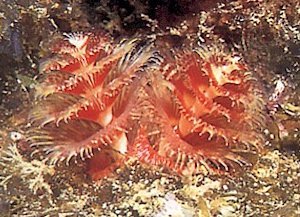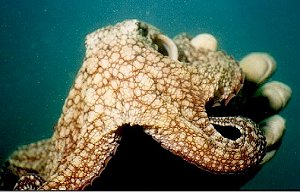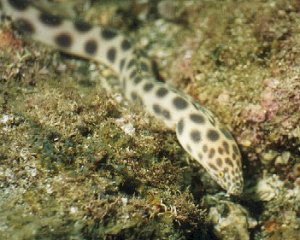 Scuba Diving
Scuba Diving
on the Manzanillo, Colima Coast
SCUBA: self-contained underwater breathing apparatus
|
SCUBA: self-contained underwater breathing apparatus
|
|
Remember, however, Pacific coast diving is quite unlike the Caribbean, in that diving conditions change daily. Periodic strong wave action on the Pacific can affect all water sports activities. This phenomena is known as Rebalses. Before you go out on your own, check with the local dive shop for an update.
 |
ROCA ELEFANTE (Elephant Rock) is another site that can only be reached by boat. This dive features underwater tunnels (about 50 yards in length) through the mountain, 2 swim-through underwater arches (the first opening into a high-walled canyon with a white sand bottom, squeeze-through crevices, shallow coral reefs, and a booming, surging blow-hole. Schools of yellowtail surgeonfish and king angels swim by, right under the boat, and several species of puffers frequent the area. Other noteworthy dive buddies we've seen include turtles, a 30-foot whale shark (a harmless plankton eater), zebra and jewel morays, dolphins, giant Pacific mantas, and electric rays. Depths from 20-60 ft.
LOS CARRIZALES (The Reeds) is a quiet, deep bay about 20 minutes north of Audiencia Beach, where it is said that more than a million dollars of Spanish gold and silver were lost in a storm more than 400 years ago. One never knows whether divers will happen across the treasure while exploring this uncharted
 |
LA HERRERA COVE (also known as Horseshoe Cove or Lover's Beach) is spectacular. Beginning in shallow water you'll see schools of grunts and yellowtail. A giant brain coral standing 15 feet high astounds divers, while the abundant sea life in every nook and cranny tantalizes the eye.
LA AHOGADA or "Drowned Rock" is aptly named because with good visibility you can see a huge boulder about 25 feet beneath the surface. Walls and canyons make this an interesting dive with depths of up to 70 feet.
PENA BLANCA is an enormous white rock (aptly named because its color is due to bird droppings of the brown and blue-footed booby) that is often visited by whales and giant pacific manta rays. Volcanic fissures and crevices, caves and deeper depths make this dive worth remembering. Prolific sea life, black coral, virtually unexplored regions. About a 40 minute boat ride from La Audiencia Beach, this diving area is designed for experienced divers. Depths from 45-100+ feet.
 |
Manzanillo dive site information and photos provided by:
Susan Dearing
Underworld Scuba
(314) 333-3678, scuba@gomanzanillo.com
Manzanillo, Colima
October 2011